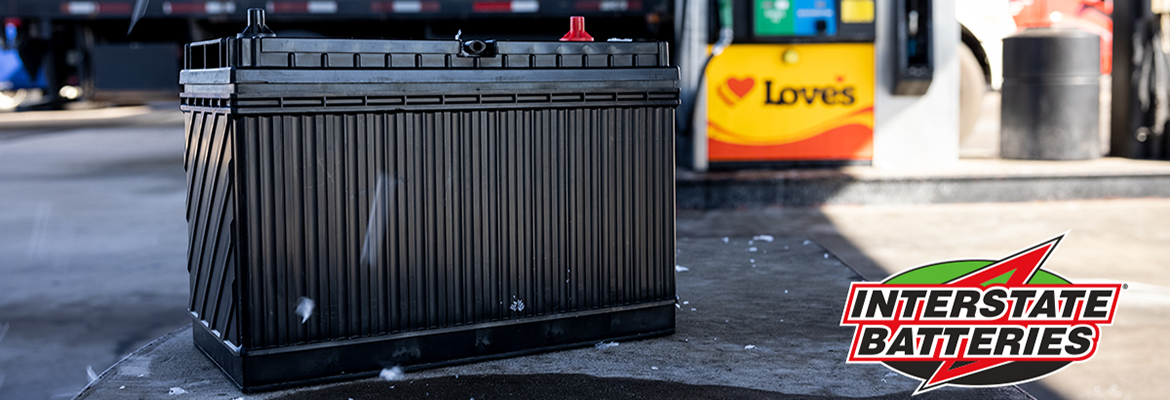Prevent a battery breakdown this winter: 10 steps for commercial truck owner-operators
By Youssef Sleiman, staff writer for Interstate Batteries
Frigid winter weather is notorious for killing batteries in trucks.
For truck owner-operators, battery-killing temperatures are a double hazard. You can lose days and dollars waiting for a replacement battery. Instead, with a few proactive steps, you might never deal with a dead battery.
Let’s start with the first and most important step you can take to prevent any battery breakdown this winter.
- Test your batteries before winter. Break down the battery packs (both the engine cranking and the auxiliary) and test each battery individually. (This should be part of a typical preventive maintenance schedule.) Replace any battery that tests at less than 12 volts or gives a cranking rating weaker than what its sticker says. If you’re not sure, replace it. Better safe than stopped. Visit your nearest Speedco or Love’s Truck Care for a battery test now.
- Recharge batteries when warm. They’ll recharge faster and more completely when they’re not colder than 65°F. All chemical reactions slow in the cold. That’s why batteries are rated in cold cranking amps (CCA); it’s a battery’s minimum performance in harsh conditions, specifically at 0°F.
- Use your engine block heater. A warmer engine is easier to start, and when cold temperatures suppress your cranking batteries’ power, every bit of help makes a difference.
- Recharge your auxiliary batteries after use. If it gets cold enough, winter can freeze batteries solid. Fully charged batteries are more resistant to freezing than run-down or even moderately charged batteries. Your auxiliary battery pack is especially vulnerable if you don’t recharge them after every use.
- Charge cranking batteries before a cold snap. Your engine’s alternator already charges your cranking batteries. But your alternator isn’t designed purely for recharging; it’s running the rest of your electronics. So, put your batteries on a trickle charger if you know temps will really drop in the morning.
- Park near warm buildings. Wind chill isn’t a factor for batteries; it’s the ambient temperature that can kill them. Parking in a garage is nice but not always possible. Parking near a warm building or heated equipment may make the difference of one or two degrees – potentially the difference between a strong start in the morning or not.
- Clean terminal connections. Corrosion at the terminals adds electrical resistance to starting the engine. And a little resistance can keep a winter-weak battery pack from starting the engine. A little terminal cleaner (or distilled water and baking soda) goes a long way to protect your mornings.
- Use your batteries daily. You might not need the reminder, but your batteries need daily use. Discharging, recharging, discharging again – keeping both battery packs active all winter, especially on the coldest days – will keep you starting strong.
- Try a battery blanket. You’ll have a hard time finding one off the shelf that fits your entire battery pack. However, if you can, get a cover to safely insulate your battery packs from the cold. A battery will naturally warm as it recharges during your drive, and the blanket will stretch that warmth out.
- Test your batteries again during winter. Even weak batteries will start an engine on a warm day. That’s why, in the winter, batteries will show their weaknesses, either on a tester or by not starting on a cold morning. Take extra precaution mid-winter and test the whole battery pack again. You can get a battery test at your nearest Love’s or Speedco.
